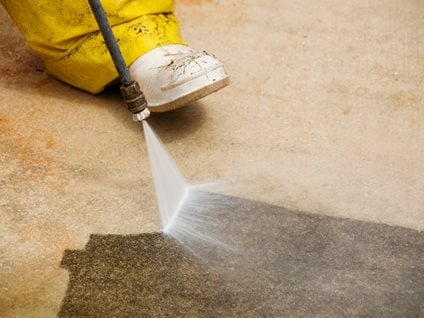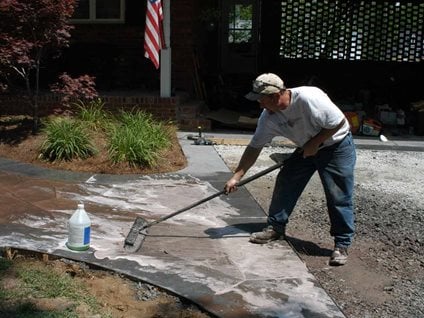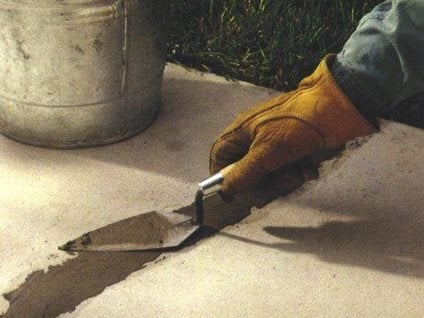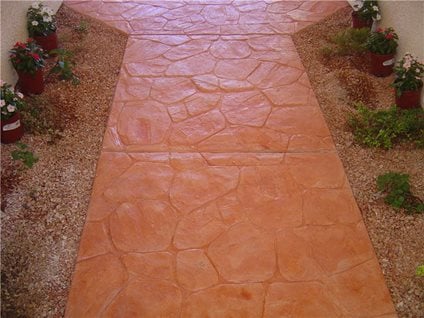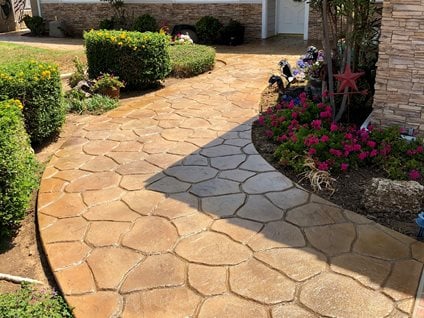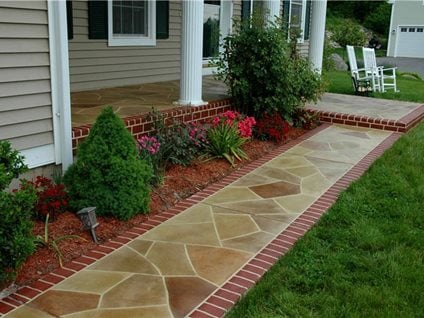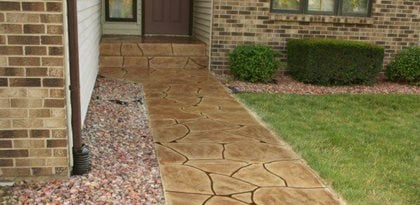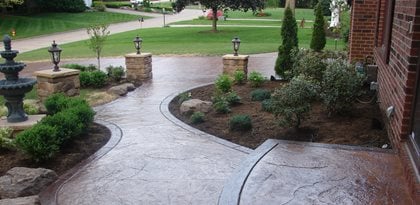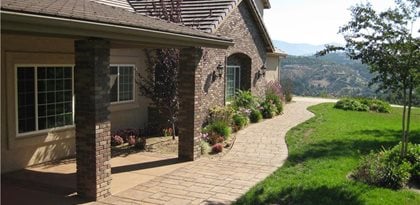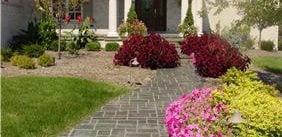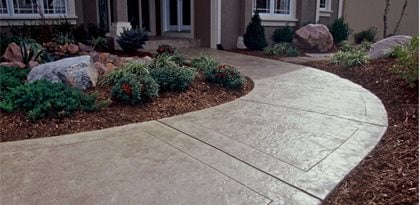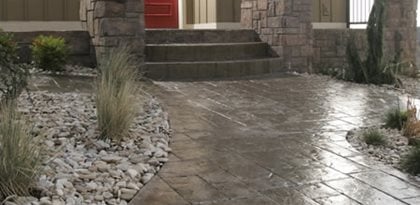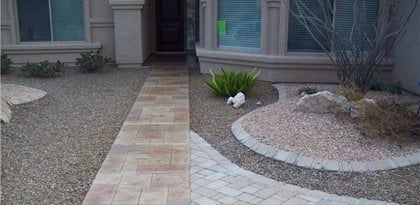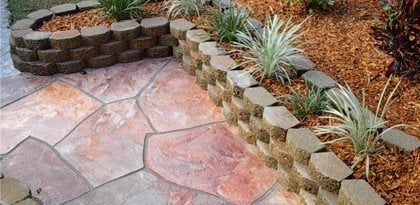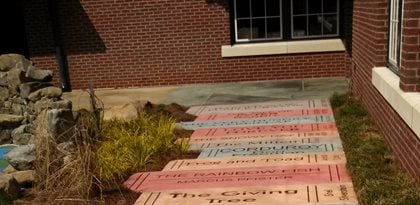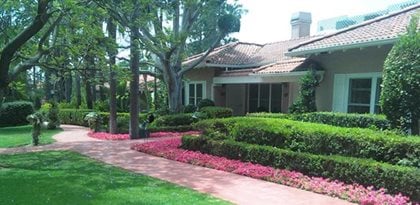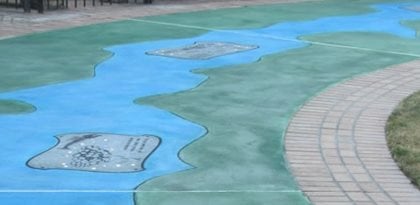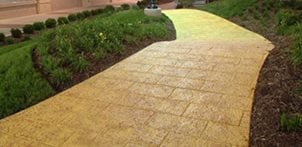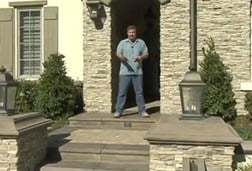- Concrete Walkways and Sidewalks
- Concrete Walkway Pictures
- Decorative Finishes for Existing Walkways
- Fix and Color Existing Concrete Walkways
- Sidewalk Repair - Resurfacing Concrete Walkways
- Design Ideas for Concrete Walkways
- 10 Ideas for Concrete Entryways
- Stairs and Steps
- Stamped Concrete Walkways
- Concrete Garden Bridges
- Front Porch Designs and Ideas
- Installing and Maintaining Concrete Walkways
- Concrete Walkway Cost
- DIY Concrete Sidewalk
- Building Tips for Concrete Sidewalks & Walkways
- Sealing and Protecting Walkways & Sidewalks
- Sidewalk Pavers
- Other Resources
- Concrete Contractors: Find Products and Suppliers
How to Improve Your Concrete Walkway
6 ways to update an existing concrete walkwayThere are plenty of options for updating the look of your concrete walkway. Some are quick DIY solutions, while others require a professional concrete contractor. Compare your options below for improving your walkway.
Give it a good cleaning.
Whether you have plain concrete or a decorative surface, dirt and grime can build up over time. Clean your concrete walkways as a starting point to see what you're working with.
Seal your walkway.
Sealing a concrete sidewalk protects the surface from stains and weather damage, plus it enhances the appearance. Sealers are available in matte, satin and high gloss finishes and some can be tinted to add a subtle hint of color.
Repair cracks.
Cracked concrete can be unattractive and unsafe. Learn how to fix cracks in 4 steps.
Paint the surface.
Painting concrete is a fast, affordable way to upgrade your sidewalk. However, make sure you are using the right type of paint and that the surface is clean and dry before application.
Stain the concrete.
Stained concrete offers rich color that will dramatically improve your curb appeal.
Resurface with an overlay.
Top your concrete with a fresh layer that can be textured, stamped, or colored. Learn more about resurfacing concrete walkways.
Finish off your updated walkway by landscaping along it with nice plants and either mulch or stone. See more ideas for garden paths and walkways from LandscapingNetwork.com.
DESIGN IDEAS FOR COLORED CONCRETE WALKWAYS
Concrete is the only sidewalk material that you can custom color to match or complement your home's architecture and color palette. Creating this unified appearance can be as simple as matching the color of your concrete walkway to your home's roof, exterior siding or front door. Or let the distinct character of your home's architecture be your guide when choosing a suitable color or pattern.
In public spaces, it’s possible to turn an ordinary concrete sidewalk into an interactive experience by using color to help guide pedestrians or tell a story. If you already have a plain gray concrete walkway or sidewalk, you can easily transform the color by applying a chemical stain or decorative concrete overlay.
See these examples of popular color options for concrete walkways:
Earth-Toned Concrete Walkways
Shades of brown, tan, terra cotta and other earth-tones create stunning concrete sidewalks that blend in beautifully with most landscapes and home exteriors. These color schemes are warm and inviting, making them ideal for everything from entryways to garden pathways.
Shades of Gray
Gray concrete sidewalks don’t have to look boring and ordinary. With the addition of darker gray color accents, such as pewter or charcoal, they can be given the rich look of slate or weathered flagstone. This neutral color palette also blends well with most home styles and landscapes.
Multicolored Concrete Walkways
By using a broader spectrum of colors and coloring methods, contractors can give concrete sidewalks realistic stone or tile finishes and custom graphic enhancements. Often these finishes require more skill, time and effort to install because the individual colors must be applied by hand to achieve the desired decorative detail. However, the results can be stunning, making multicolored walkways particularly suitable for high-visibility concrete entryways.
Bright or Pastel Color Schemes
Concrete walkways in parks, plazas, downtown areas and other public spaces often serve as essential elements for "wayfinding," or encouraging people to go from one area to another. To create these walkable tableaus and guideposts, contractors often rely on eye-catching color schemes that attract attention and beg to be noticed. Vivid sidewalk colors can also be used to establish a theme and create continuity. See these examples.
COLORING TECHNIQUES
The most popular methods for coloring exterior concrete are chemical stains, integral color and dry-shake hardeners. Each of these methods can be used alone or in combination to create unique multi-tonal effects and custom graphics. Custom color matching is also possible with many products.
Integral coloring admixtures infuse concrete walkways with rich, long-lasting, fade-resistant color. It’s a popular option for exterior concrete because the color runs throughout the entire slab and will not fade due to sun or weather exposure. This coloring method also works well as a backdrop for contrasting accent or antiquing colors, such as pigmented release agents and stains. See Integral Color.
Acid, or chemical-based, concrete stains are an economical and highly versatile way to color both new and existing concrete walkways. Stains can be applied by hand after the concrete sets, giving contractors the ability to add subtle hints of color or bolder design accents. Acid stains penetrate and react chemically with the concrete, creating natural color variations that add character and unique mottling effects. However, the color selection is generally limited to subtle earth tones, such as tans, browns, terra cottas, and soft blue-greens.
Water-based stains (typically a blend of acrylic polymers and pigments) penetrate the concrete to produce permanent color, ranging from translucent to opaque depending on the product. They go beyond the subtle color effects of acid-based stains and come in a much broader spectrum of hues. Most manufacturers offer dozens of standard colors to choose from (see these concrete stain color charts).
Dry-shake color hardeners and antiquing agents are the most popular coloring methods for stamped concrete walkways because they produce realistic color variations similar to natural stone. Because the color is concentrated at the surface, it tends to be more intense than integral color. See Color Concrete with Concrete Color Hardener.
